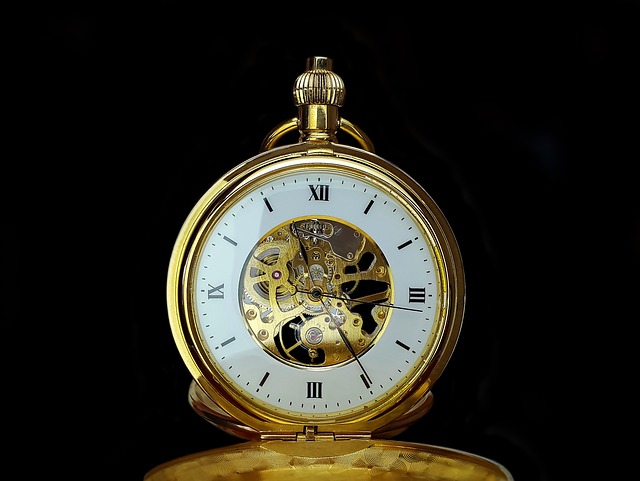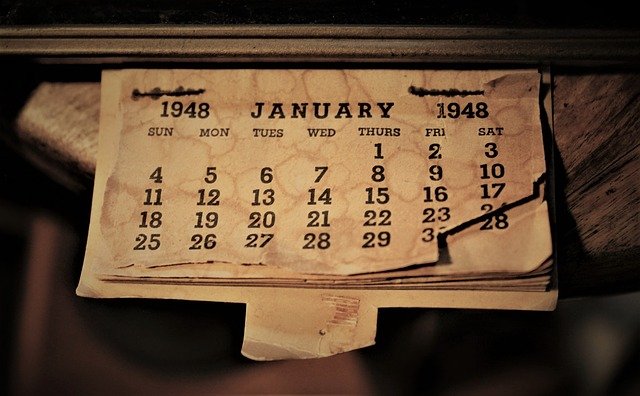By Tim Lambert
Early Clocks
Today we take knowing the time and the day of the year for granted but for our ancestors, it was far more difficult. Until mechanical clocks were invented in the 13th century there were various ways of telling the time.
The earliest method of telling the time of day was the sundial. It is not known when the sundial was invented but it was certainly used in Ancient Egypt and Ancient Iraq. They are also mentioned in the Old Testament. Other ancient civilizations such as the Greeks and the Romans also used sundials. Over time sundials gradually became more accurate and they remained a common way of telling the time until the early 19th century.
About 1400 BCE the Egyptians invented the water clock. It consisted of two containers of water, one of which was higher than the other. Water flowed along a tube from the higher container to the lower at a steady rate. Rings were marked on the inside of the lower container and when the water level reached one it meant another hour had passed.
The Saxons used a candle clock. A candle was divided into segments and it took an hour for each segment to burn.
Mechanical Clocks
The mechanical clock was invented in the Middle Ages. Who made the first one and when is not known but it was around the end of the 13th century. In 1309 a clock is recorded in a church in Italy. The oldest working clock in the world is in Salisbury Cathedral. It dates from 1386 and it has no dial. Instead, it chimes the hours. (Our word clock comes from the Latin word for bell ‘clocca’).
Early clocks were normally in churches and they were very heavy because they were worked by weights. However, in about 1450 the coiled spring was invented and it made possible portable clocks. The first watches were made in 1510. In the 16th century, some rich people had clocks in their homes but they were very expensive.
Early clocks were not very accurate but in 1657 Christiaan Huygens introduced the pendulum. Clocks became far more accurate though they were still set using sundials.
In the late 17th clocks with long cases were made. In the early 20th century they became known as Grandfather clocks. Meanwhile, the cuckoo clock was invented c. 1775. The stopwatch was invented in 1776 and the electric clock was invented in 1840. The quartz crystal clock was invented in 1929 and the atomic clock was invented in 1955.

The first known clockmaker in America was Thomas Nash (1589-1658). He was recorded in New Haven, Connecticut in 1638. There were, of course, many other clockmakers in North America in the 17th century and 18th centuries.
In the USA Simon Willard patented the banjo clock in 1802.
In Britain, each town had its own time and it was not standardized until the 1840s with the coming of the railways. International time zones including Greenwich Meantime were formed in 1884.
Watches were very bulky until c.1675 when the spiral hairspring was invented and modern pocket watches evolved. The electric watch was introduced in 1957 and the quartz crystal watch was introduced in 1967.
However, sundials were used long after clocks were invented. In the Middle Ages and the 16th century, many people carried pocket sundials. Several pocket sundials were found on the Mary Rose, which sank in 1545. Shakespeare mentioned a sundial in his play As You Like It:‘and then he drew a dial from his poke’. (A poke was a bag).
Even in the 18th century clocks were a luxury. In 1726 Lady Farringdon added clocks to Chichester Market Cross. At the time they were very expensive and it was a very generous act.
The History of Calendars
The phases of the Moon last approximately one month so it was easy for ancient people to measure that length of time. However, every society needs a length of time shorter than a month but longer than a day so the week was invented. Sunday is, obviously named after the Sun, and Monday is named after the Moon. Saturday is named after Saturn.
The other days of the week are named after Germanic gods. Tuesday is named after Tiw the god of war. Wednesday is named after Woden the chief god. Thursday is named after Thor the god of thunder and Friday is named after the goddess Frigg.
In 45 BC Julius Caesar introduced a new calendar with 12 months. He also added a leap year.
The Romans celebrated New Year on 1 March so the name September is derived from Latin words meaning the seventh month. October was the 8th month, November was the 9th month and December was the 10th month.
In England, New Year was not officially in January until 1752. January is named after the Roman god Janus, who was the god of gates, doors, and beginnings. February may be named after the Roman festival of Februa. March is named after Mars the god of war. June is named after the goddess Juno and July is named after Julius Caesar. August is named after Augustus Caesar.
The origin of the names of the other months is not certain. April is believed to be derived from the Latin word aperire, which means to open because buds opened at that time. Maia may be named after the goddess Maia.
In 1582 Pope Gregory 13th introduced a new calendar. The calendar went forward 10 days and century years (like 1800) would no longer be leap years unless they were divisible by four. Britain adopted the Gregorian calendar in 1752 but in Russia, it was not adopted until after the revolution of 1917.
In the early years of Christianity, there was a dispute over the date of Easter. In 325 the Nicean Council decided it should be on the first Sunday after the full moon after the Spring Equinox. That is why the date of Easter changes each year.
Christmas is, of course, Jesus’ birthday. However, it is very unlikely Jesus was born on 25 December! In ancient times most pagans held some kind of mid-winter festival. Instead of abolishing the old pagan festivals, the Church took them over and ‘Christianized’ them. In 354 AD 25 December was fixed as the birthday of Christ.
At the end of the 5th century, a monk named Dionysius the Short introduced a new way of calculating dates. Previously dates were calculated from the foundation of Rome. Dates were now calculated from before the birth of Jesus (BC) or before Christ and in the year of Our Lord (AD or anno Domini). However, Dionysius miscalculated and Jesus was born at least 4 BC.
Before the Reformation people would often record the date by writing Saint so-and-so’s day rather than writing the day of the month. Many saint’s days were days of rest and our word holiday is derived from holy day.
In an agricultural society, life was dominated by the seasons. The old word for Spring was Lenten (related to our word lengthen because the days lengthen at that time). Later it came to mean the days before Easter and it was shortened to Lent. The word Spring was first used for this season in the 16th century.

Last revised 2024